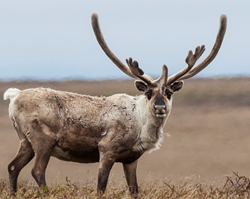Conservation Groups: First Western Arctic Drilling Plan Fails Balance Test


Anchorage, AK (PRWEB) October 29, 2014
Today the Alaska Office of the Bureau of Land Management issued its final plan for the Greater Mooses Tooth Unit 1 project in the National Petroleum Reserve-Alaska, also known as the Western Arctic Reserve (Reserve), allowing for a road that will permanently damage the Western Arctic’s sensitive wetlands and tundra and cause lasting impacts on the region’s wildlife and subsistence values.
With over half of the Reserve’s 23 million acres potentially available for oil and gas leasing, very careful consideration must be made of where oil and gas drilling will take place, and how it can be done in such a way that protects the wildlife, subsistence and wilderness character of our nation’s largest parcel of public land.
The project will be in the northeastern corner of the Reserve near the Teshekpuk Lake and Colville River Special Areas, which provide important habitat for caribou, polar bears, migratory birds and waterfowl. The project will also be near the Colville River Delta, the largest and most productive river delta in northern Alaska, and have direct impacts on the Colville’s Fish Creek tributary.
Greater Mooses Tooth will be the first commercial oil development on federal lands in the reserve under the Obama’s administration’s 2012 Integrated Activity Plan, which allows for leasing 72% of the economically recoverable oil in the reserve while the majority of the reserve’s “Special Areas” are set aside from leasing and development to protect ecological, subsistence and wilderness values. Areas outside of Special Area boundaries include important wildlife corridors, however, so it is essential for BLM to set the highest possible standards for development by requiring best available technology and the smallest-possible footprint for the most minimal impacts to this fragile, wildlife-rich landscape.
STATEMENTS FROM CONSERVATION GROUPS:
“BLM must ensure the smallest possible environmental footprint for the Greater Mooses Tooth project,” said Cindy Shogan, Executive Director of the Alaska Wilderness League. “This project is the bellwether for all future development in the Reserve, which is why it’s critical that BLM gets this right the first time. The Reserve is a world-class landscape – teeming with wildlife such as caribou and migratory birds – and BLM must set a high standard for GMT and any future oil and gas infrastructure in the Reserve.”
“The final plan for Greater Mooses Tooth will permanently alter the landscape and significantly impact the wildlife resources within the region,” said Lindsey Hajduk, Alaska Program Director for the Conservation Lands Foundation. “Corporations drilling in one of the world’s most sensitive and unspoiled environments should be required to use the best technology and minimize impacts. We are incredibly disappointed that the Interior Department failed to uphold that standard.”
“Alaska’s Arctic is as fragile as it is vast. Oil and gas development on wetlands and tundra is never a good idea – even using the latest technology. Every possible protection must be taken where oil corporations are allowed to drill in this world class area including making development areas as small as possible and inaccessible by roads connecting to the outside,” said Charles Clusen, Alaska Project Director for the Natural Resources Defense Council.
“The Greater Mooses Tooth area contains significant ecological resources which must be protected in any balanced development plan,” said Kevin Harun, Alaska Program Director of Pacific Environment.
“Climate disruption is already tipping the delicate balance that has supported Arctic wildlife and Alaskan Native subsistence communities for millennia. Poorly planned dirty fuel development will further tilt the vast, wild places of the Western Arctic toward being unlivable for both people and wildlife,” said Dan Ritzman, Alaska Program Director for Sierra Club’s Our Wild America campaign.
“We have strongly supported the Integrated Activity Plan for the way it balances conservation and development,” said Nicole Whittington-Evans, Alaska regional director for The Wilderness Society. “But development must be done right, and that means using good scientific data and doing a thorough analysis of all available options. The BLM’s management plan set an example for how to balance America’s needs. The standards for Greater Mooses Tooth 1 should set a high bar for safety, environmental protection and industry accountability.”
CONTACTS:
Gwen Dobbs, Alaska Wilderness League, (202) 266-0418 or gwen(at)alaskawild(dot)org
Brian O’Donnell, Conservation Lands Foundation, (970) 247-0807, brian(at)conservationlands(dot)org
Jeff Benzak, Natural Resources Defense Council, (202) 513-6248 or jbenzak(at)nrdc(dot)org
Elisabeth Dabney, Northern Alaska Environmental Center, (907) 452-5021, dabney(at)northern(dot)org
Kevin Harun, Pacific Environment, kharun(at)pacificenvironment(dot)org
Virginia Cramer, Sierra Club, (804) 225-9113 x 1002 or virginia.cramer(at)sierraclub(dot)org
Neil Shader, The Wilderness Society, (202) 429-3941 or neil_shader(at)tws(dot)org
Tim Woody, The Wilderness Society, (907) 223-2443 or tim_woody(at)tws(dot)org
###
Find More Technology Press Releases